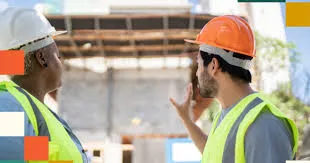
The U.S. construction industry is navigating a turbulent period of change in labor, employment, and immigration law, with federal enforcement now more aggressive than in decades. Since January 20, when President Donald J. Trump took office, a wave of new policies has altered the way companies recruit, verify, and retain their workforce — particularly when it comes to foreign labor.
These policy shifts, combined with increased resources for Immigration and Customs Enforcement (ICE), have made it critical for construction firms to strengthen compliance systems and protect themselves from costly penalties.

For nearly 40 years, federal authorities avoided enforcing immigration violations in “sensitive locations” such as schools, hospitals, and churches. That era is over. Customs and Border Protection (CBP) and ICE now have broader powers to identify and apprehend undocumented workers, including at construction sites. The result: companies can no longer assume low visibility will protect them from audits or raids.
With ICE targeting sectors that rely heavily on immigrant labor — including construction, shipbuilding, and food production — firms must treat compliance as a strategic priority, not just a legal requirement.
In the first six months of the Trump Administration, enforcement actions surged. More agents, more funding, and more audits have made it harder for non-compliant businesses to operate undetected. Additionally, policy changes like the termination of Temporary Protected Status (TPS) for certain nationalities have reduced the pool of legally available foreign workers, adding strain to an already tight labor market.
The Department of Justice’s Corporate Whistleblower Awards Pilot Program (CWAP) offers employees financial rewards for reporting immigration violations — up to 30% of the first $100 million recovered. This not only increases the financial risk for employers but also raises the possibility of reputational harm if allegations become public.
To counter this, companies should establish strong internal reporting mechanisms, encourage transparency, and ensure workers feel safe raising concerns internally before going to outside agencies.
Given the unpredictability of site inspections, every construction company should have a dedicated response team trained to:
Staff should be educated about their legal rights, including the right to remain silent, the right to counsel, and the right to refuse assistance beyond the law’s requirements. On a busy construction site, running from agents can also create safety hazards — something employers must stress during training.
The I-9 form remains a cornerstone of compliance, requiring verification of employee identity and work eligibility. Employers must review and confirm documents within three business days of hire. In states where E-Verify is mandatory (e.g., Florida, Texas, Tennessee), companies should integrate the system into their hiring process to confirm eligibility quickly.

For workforce shortages, the H-2B visa program offers a legal route to bring in temporary foreign workers for up to 10 months. Employers must advertise jobs to U.S. workers first, secure Department of Labor certification, and then petition U.S. Citizenship and Immigration Services before visas are issued through consulates.
Check employment records, I-9 accuracy, and E-Verify logs.
Include HR, site managers, and payroll in legal compliance briefings.
Maintain a relationship with an immigration attorney for rapid advice during audits or enforcement actions.
Create multilingual compliance guidelines to ensure all employees understand expectations and rights.
Develop backup staffing options in case a portion of the workforce is lost due to enforcement action.
In today’s enforcement-heavy climate, compliance is no longer optional — it’s a survival strategy. Construction companies that combine proactive legal adherence, well-trained staff, and contingency planning will be best positioned to meet labor demands without falling afoul of federal law.
Stay informed, document thoroughly, train regularly, and explore legal labor options like the H-2B program to maintain both workforce stability and regulatory compliance.
Originally reported by Brandon davis in Mondaq.